Description
Context
- A new study led by the University of Helsinki predicts that future coral loss might cause a more than 40% reduction in reef fish diversity globally.
Correlation between Fish and Coral
- Fish and coral diversity vary widely, with many more species in the Indo-Pacific "coral triangle" than in the western Atlantic and eastern Pacific.
- Areas with diverse corals still tended to have more diverse fishes, suggesting that coral diversity begets fish diversity.
- Reason: Corals provide a unique food source for some species, as well a three-dimensional habitat that many species use for shelter.
- And the fish that depend on corals may be prey for fish that don't depend directly on corals.
- Thus the world's tropical reef fishes are likely to disappear if corals disappear.
- The Central Pacific is expected to lose more than 60% of its reef fish, compared with only 10% in the Western Atlantic.
Coral Reefs
- Coral reefs are large underwater structures composed of the skeletons of colonial marine invertebrates called coral.
- The coral species that build reefs are known as hermatypic, or "hard," corals because they extract calcium carbonate from seawater to create a hard, durable exoskeleton that protects their soft, sac-like bodies.
- Other species of corals that are not involved in reef building are known as “soft” corals.
- Each individual coral is referred to as a polyp. Coral polyps live on the calcium carbonate exoskeletons of their ancestors, adding their own exoskeleton to the existing coral structure.
- Corals actually comprise an ancient and unique partnership, called symbiosis, that benefits both animal and plant life in the ocean.
- Most corals contain algae called zooxanthellae which are plant-like organisms.
- Residing within the coral's tissues, the microscopic algae are well protected.
- Coral supplies carbon dioxide and ammonium to zooxanthellae.
- In exchange Zooxanthellae provide coral with nutrients through photosynthesis. Corals need these organic products of photosynthesis to grow, thrive, and build up the reef.
- This algae provides 90% of coral’s energy source and is vital for the health of both individual polyps coral and reef as a whole.
- This relationship, where both organisms benefit, is known as a symbiotic relationship.
- The algae are responsible for the pale-pink pigmentation of coral.
- As the centuries pass, the coral reef gradually grows one tiny exoskeleton at a time, until they become massive features of the marine environment.
- Corals are found all over the world's oceans, from the Aleutian Islands off the coast of Alaska to the warm tropical waters of the Caribbean Sea.
- The biggest coral reefs are found in the clear, shallow waters of the tropics and subtropics.
- The largest of these coral reef systems, the Great Barrier Reef in Australia, is more than 1,500 miles long (2,400 kilometers).
- Coral reefs cover less than 1 percent of the ocean floor.
- Most reefs are located between the Tropics of Cancer and Capricorn, in the Pacific Ocean, the Indian Ocean, the Caribbean Sea, the Red Sea, and the Persian Gulf.
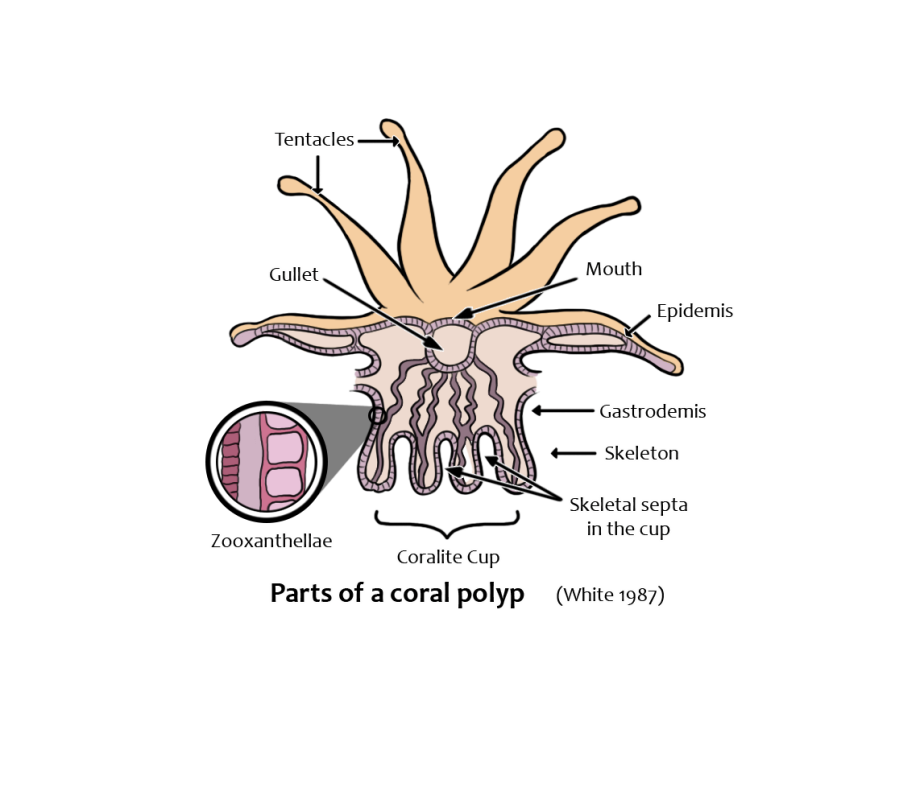
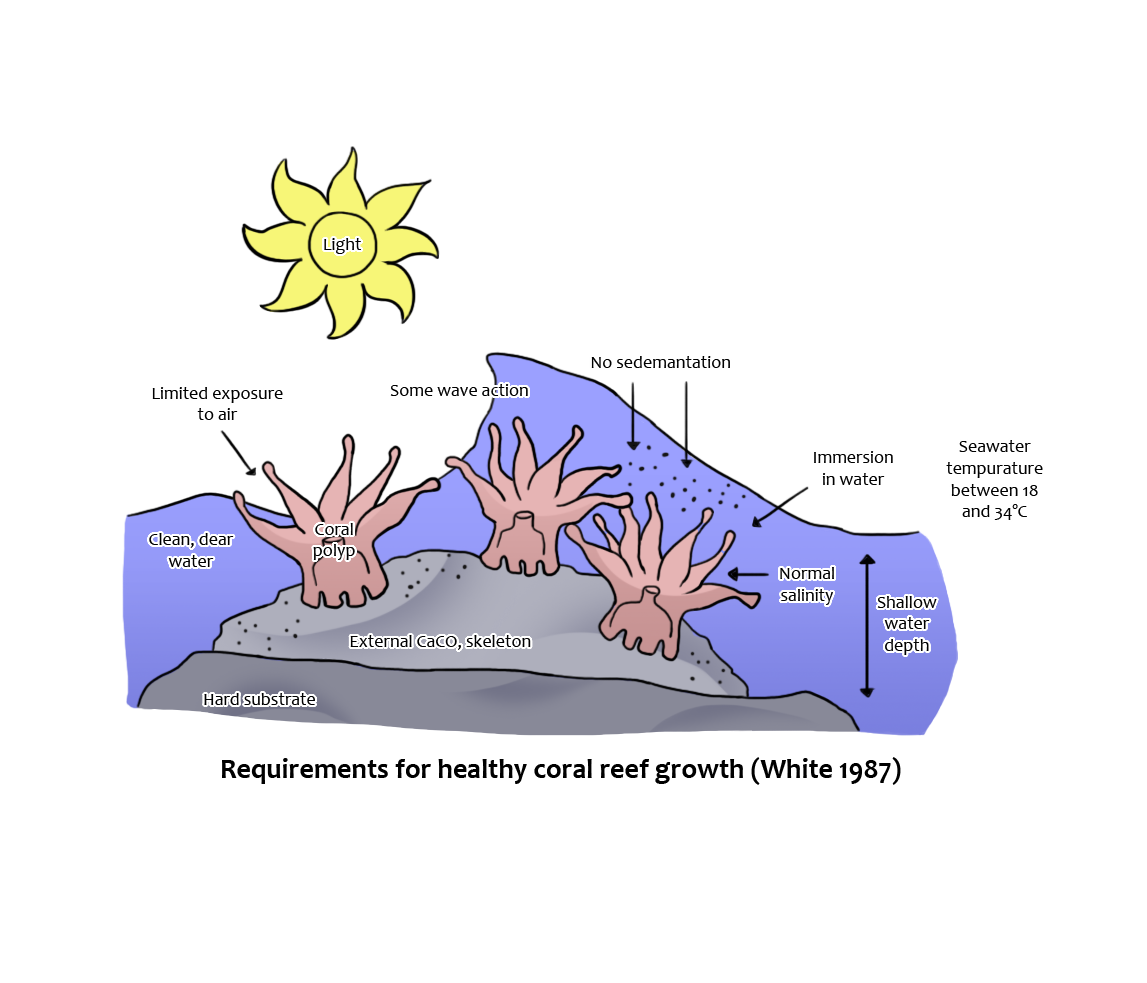
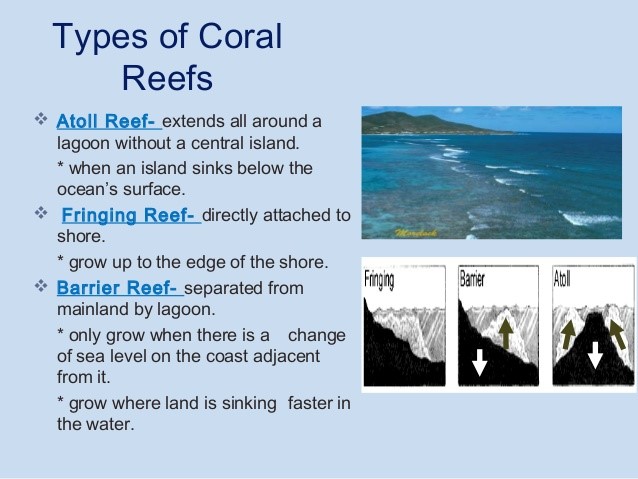
Coral Bleaching
- Coral bleaching occurs when coral polyps expel algae that live inside their tissues.
- Normally, coral polyps live in an endosymbiotic relationship with these algae, which are crucial for the health of the coral and the reef.
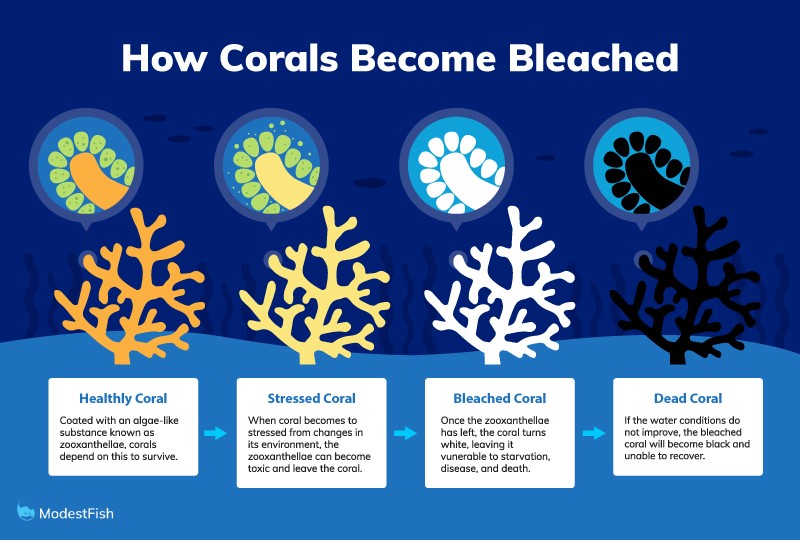
Causes of Coral Bleaching
- Temperature: There is rise in seawater temperature as a result of global warming. Changes in water heat affect zooxanthellae photosynthesis, forcing it out of coral polyps and depriving coral of essential resources.
- Solar Irradiance: During summer months, coral bleaching can occur due to solar radiation. Both photosynthetically active radiation and UV radiation have been associated with bleaching.
- Subaerial Exposure: Low tides, sea level drops and tectonic uplift can result in sudden exposure of coral to the atmosphere. Whether due to exposure to high/low temperature, increased solar radiation or desiccation, subaerial exposure often results in bleaching and consequent coral death due to sudden changes in atmospheric conditions.
- Sedimentation: Activities such as land clearing and coastal construction can result in high rates of erosion, increasing sediment content in water and disrupting the natural process of photosynthesis.
- Fresh Water Dilution: Following intense storms or heavy rainfall, increased freshwater precipitation can cause rapid dilution, increasing water salinity. Such events, can cause bleaching in small, nearshore areas.
- Inorganic Nutrients: Increases in inorganic nutrients such as ammonia and nitrate do not deplete coral of zooxanthellae, but rather cause it to multiply, increasing its content by 2-3 times. Though this does not directly cause bleaching, secondary adverse effects such as lower coral resistance and increased disease susceptibility can occur.
- Xenobiotics: Exposure of coral to chemical contaminants such as copper, herbicides and oils can cause zooxanthellae loss. Such loss is often highly localized, only occurring where xenobiotics (foreign substances) come into contact with coral.
- Epizootics: Epizootics are diseases that are temporarily prevalent, often becoming widespread through animal populations. Pathogen-induced bleaching commonly results in sporadic or whole-colony death amongst coral populations, leaving behind a white skeleton. (Not to be mistaken for bleaching.)
Impact
- As the coral reefs die, coastlines become more susceptible to damage and flooding from storms, hurricanes, and cyclones.
- Without the coral reefs the ocean will not be able to absorb as much carbon dioxide, leaving more CO2 in the atmosphere.
- The loss of the coral reefs would have a devastating impact on tropical countries’ economies, food supplies, and the safety of their coastal communities.
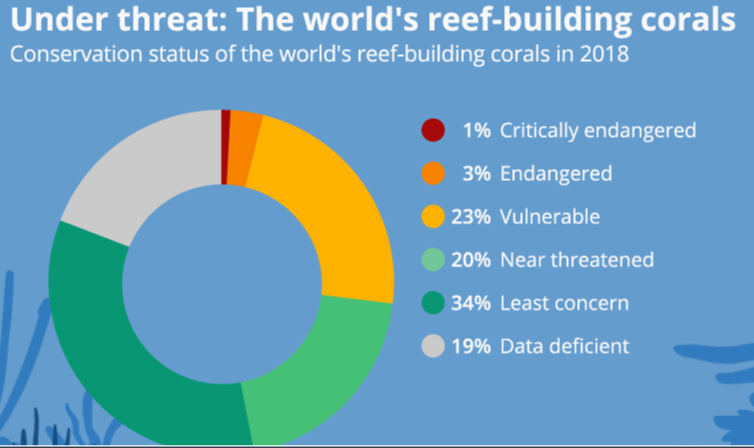
Steps to protect Coral
- Recycling and proper disposal of trash as Marine debris can be harmful to coral reefs.
- Follow the three R’s (reduce, reuse, and recycle)
- Minimize use of fertilizers.
- Conserve water – the less water we use, the less runoff and wastewater will pollute our oceans.
- stop sewage pollution of our oceans,
- expand marine protected areas
- take steps to reverse global warming.
- Use reef-conscious sunscreens. (Most of them contain ingredients like Oxybenzone, octinoxate and avobenzone which are toxic to corals.)
- Reducing Carbon Footprint.
- Ban plastics and develop cost effective eco-friendly alternative
- Climate change mitigation and adaptation.
- Global, regional and national policy support.
- Placing coral reefs on the political agenda
Coral Triangle
- The Coral Triangle (CT) is a roughly triangular area in the tropical waters around Indonesia, Malaysia, Papua New Guinea, the Philippines, the Solomon Islands and Timor-Leste.
- This area contains at least 500 species of reef-building corals in each ecoregion.
- The Coral Triangle is located between the Pacific and Indian oceans.
- As one of eight major coral reef zones in the world, the Coral Triangle is recognized as a global centre of marine biodiversity and a global priority for conservation.
- Known as the "Amazon of the seas", it covers 5.7 million square kilometres of ocean waters.
- Its biological resources make it a global hotspot of marine biodiversity.
- It contains more than 76% of the world's shallow-water reef-building coral species, 37% of its reef fish species and the world’s largest mangrove forest.
- The only coral reef area in the region to have been declared a UNESCO World Heritage Site is in Tubbataha Reef Natural Park in the Philippines.
- The World Wide Fund for Nature is addressing ecological threats to the region through its Coral Triangle Program, launched in 2007.
https://www.sciencedaily.com/releases/2021/06/210630115429.htm














